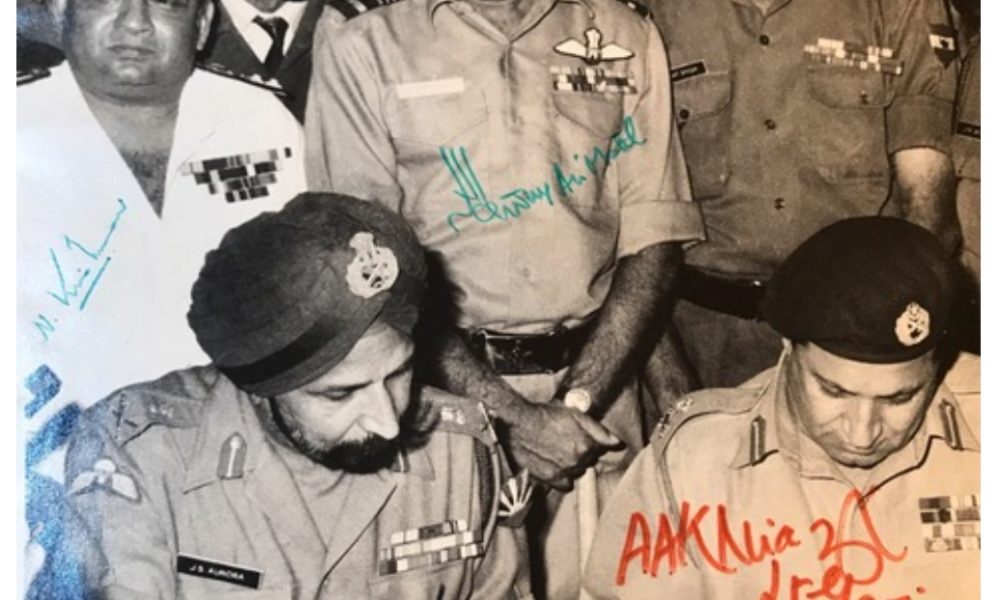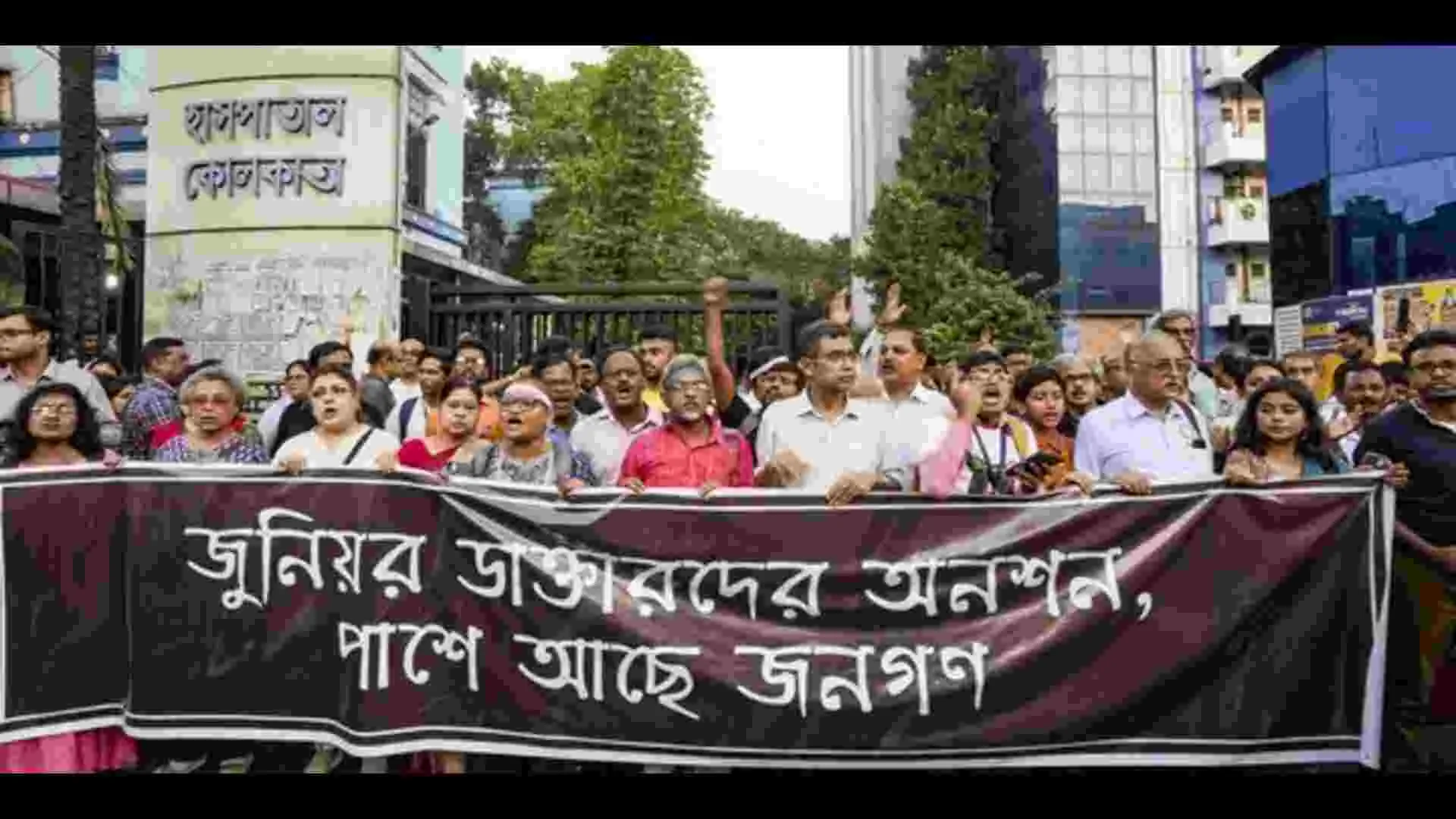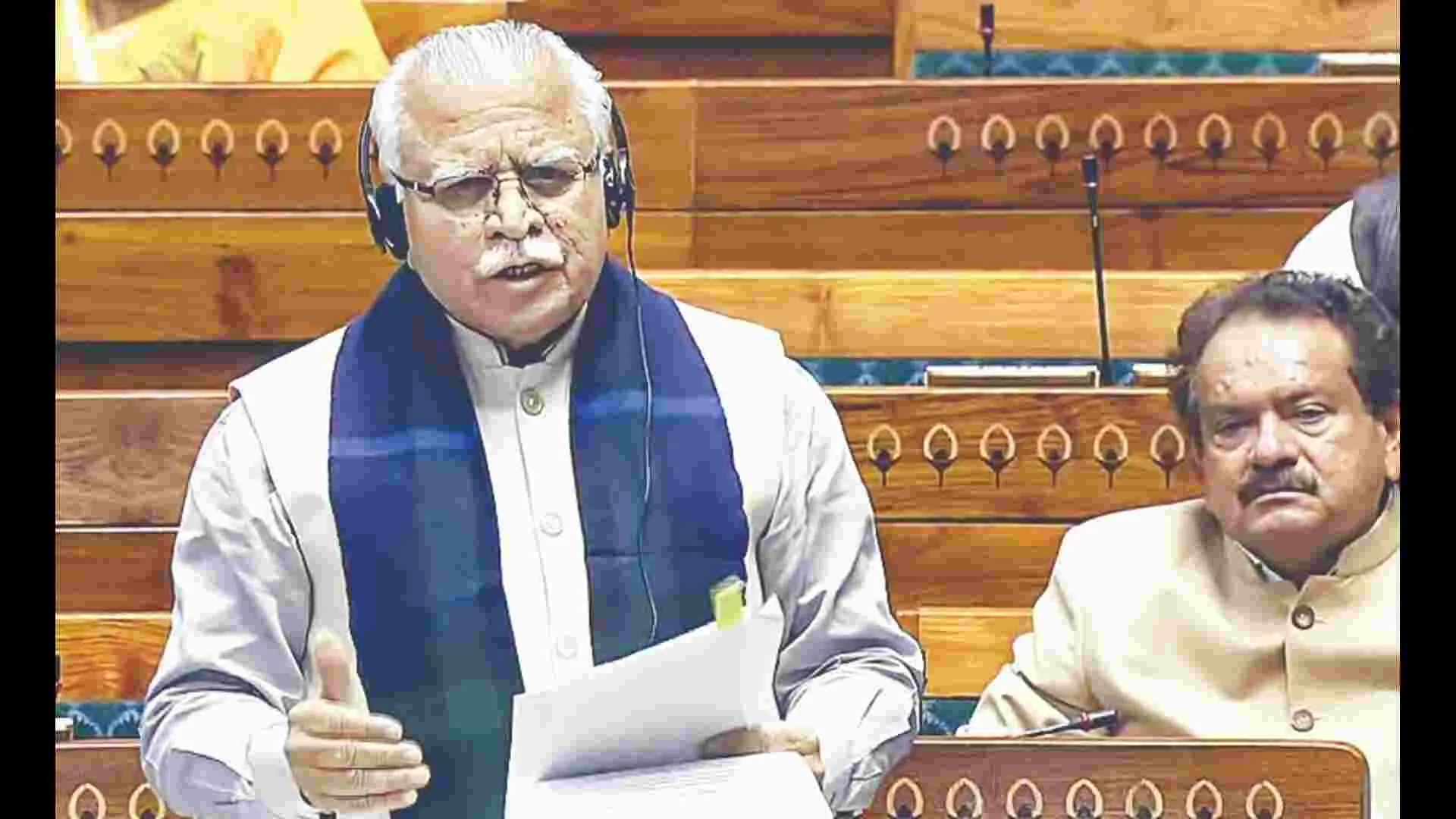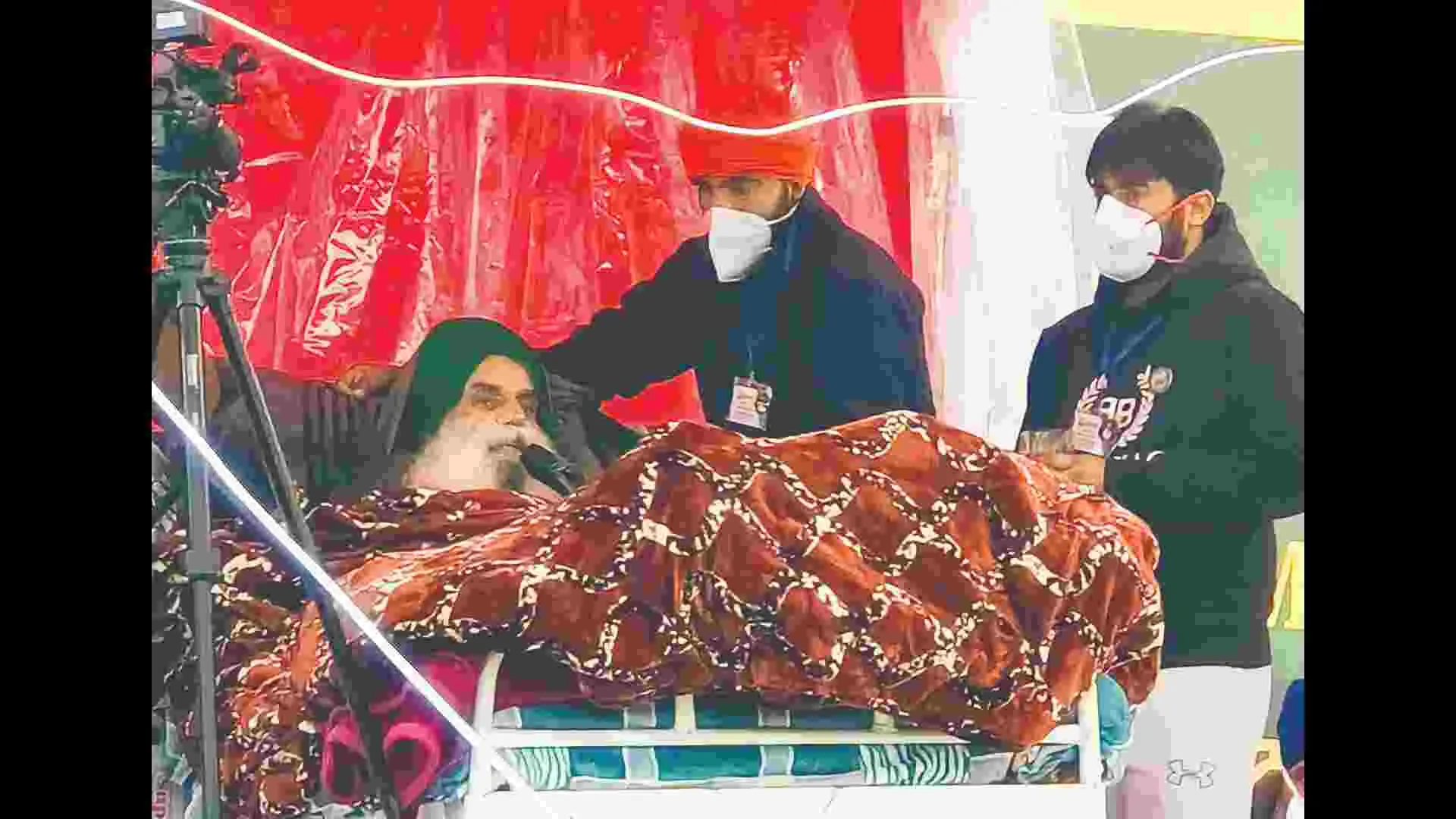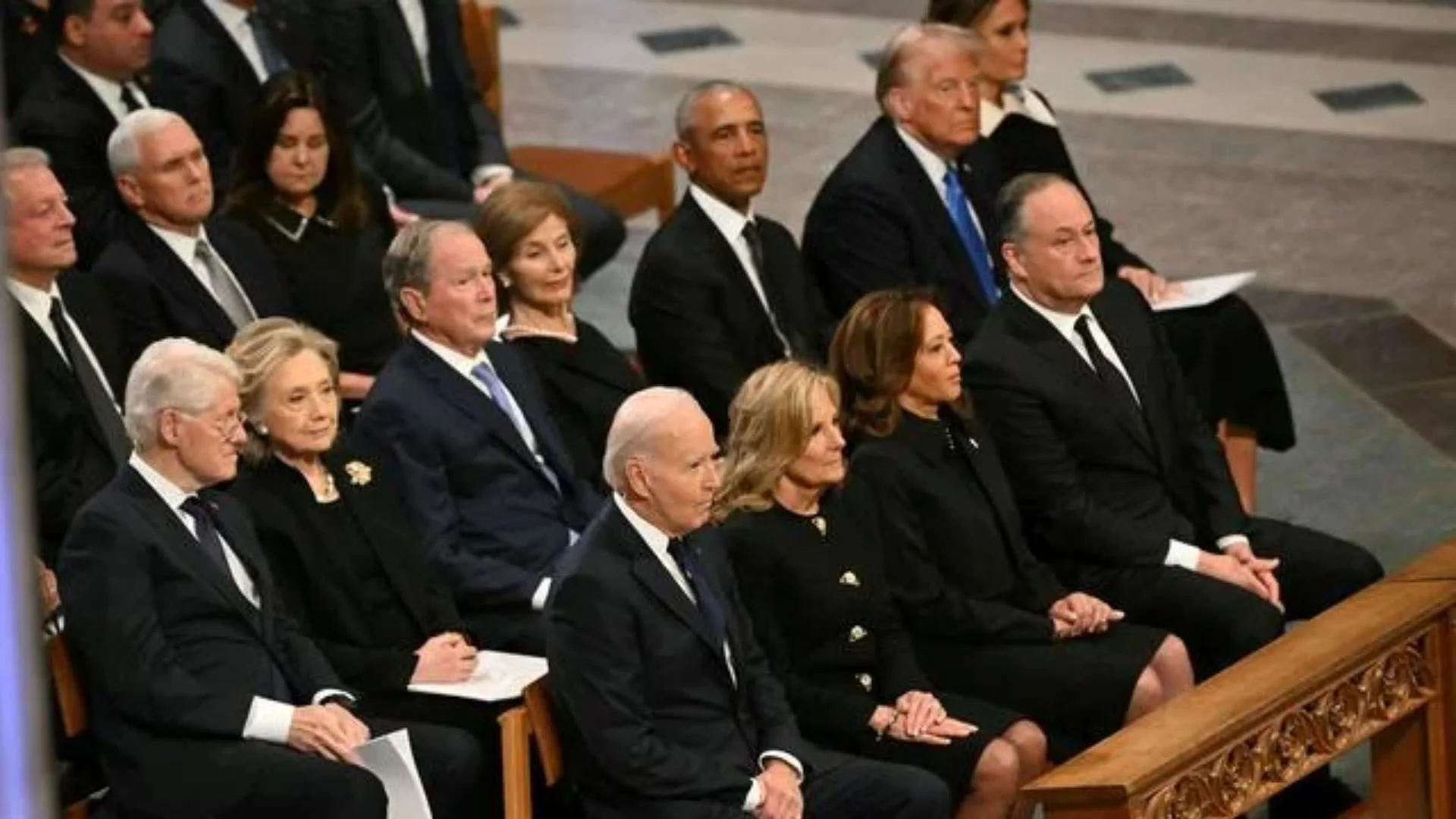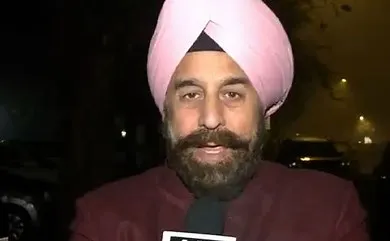Today, 8 June, is celebrated as the World Oceans Day. It is, appropriately for the occasion, also the 101st birthday of one of India’s greatest maritime heroes Vice Admiral Nilakanta Krishnan. To ensure that the mists of time do not result in the receding of memory, it is important to recollect his contribution to India and the Indian Navy. Krishnan is the short stocky figure in whites with his cap at a jaunty angle in the famous picture of Lt Gen A.K. Niazi surrendering to Lt Gen Jagjit Singh Aurora, in December 1971 at Dacca. As the Flag Officer Commanding in Chief (FOCinC) of the Eastern Naval Command (ENC), Krishnan was the principal architect of the naval operations, in the Bay of Bengal, for which he was awarded the Padma Bhushan. While the story of 1971 is worth recounting, Krishnan’s illustrious life had a string of accomplishments throughout his career in the Navy and even after, as the first Chairman and Managing Director of the Cochin Shipyard Limited (CSL). His podgy exterior hid a razor-sharp mind and most contemporaries and juniors of that time regard him as one of Indian Navy’s most brilliant strategists. Capt Mohan Ram, a retired Navy officer and subsequently corporate head honcho, in a recent memoir, wrote: “He (Krishnan) was incandescently brilliant and had awesome command of the English language and ready repartee.” Let us take a dive into one of India’s most fascinating contemporary maritime figures.
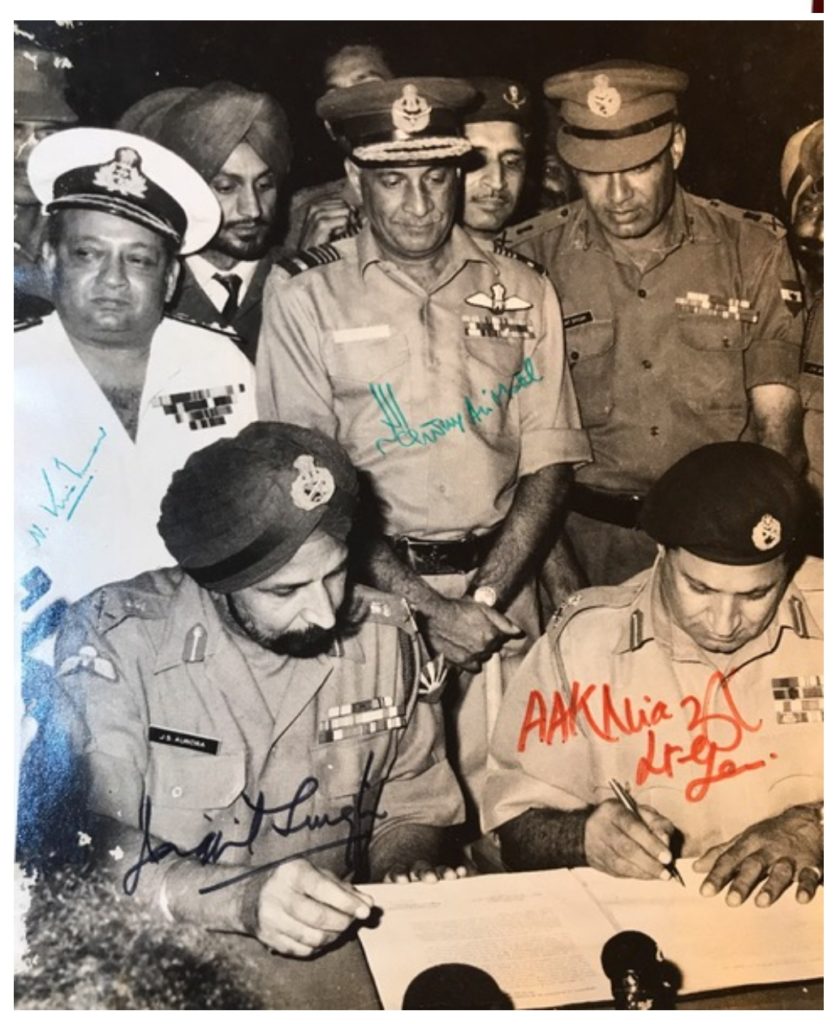
Krishnan, standing behind, in white uniform.
Photo credits/courtesy: Arjun Krishnan, son of Vice Admiral Nilakanta Krishnan.
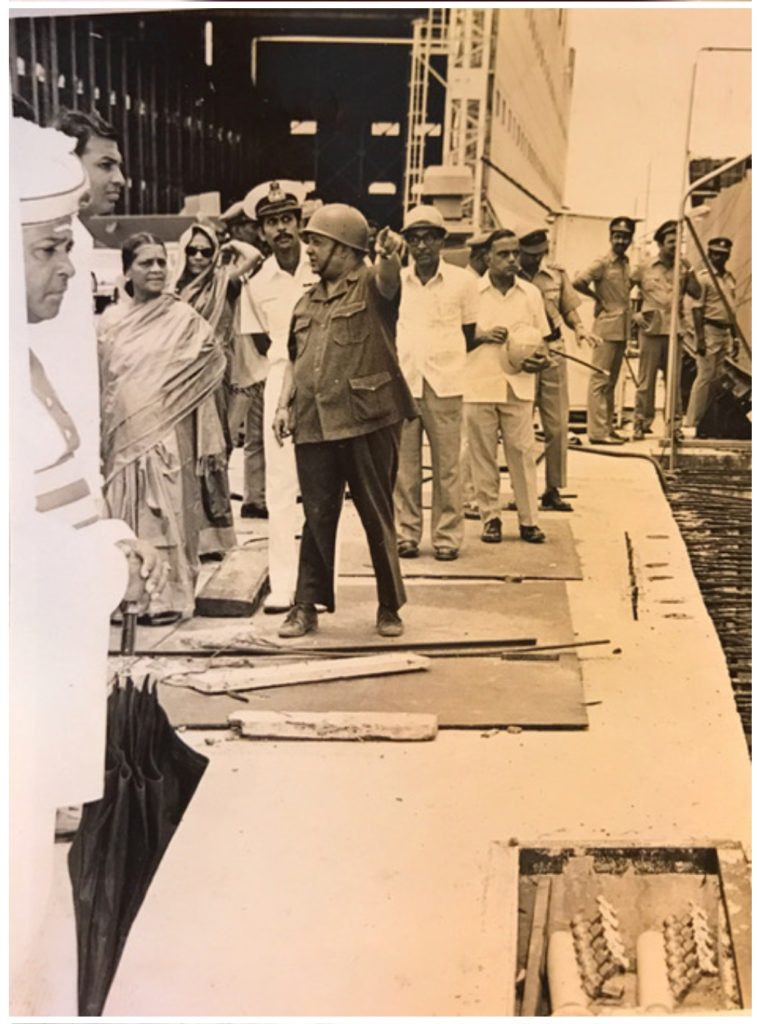
Governor of Kerala.
Photo credits/courtesy: Arjun Krishnan, son of Vice Admiral Nilakanta Krishnan.
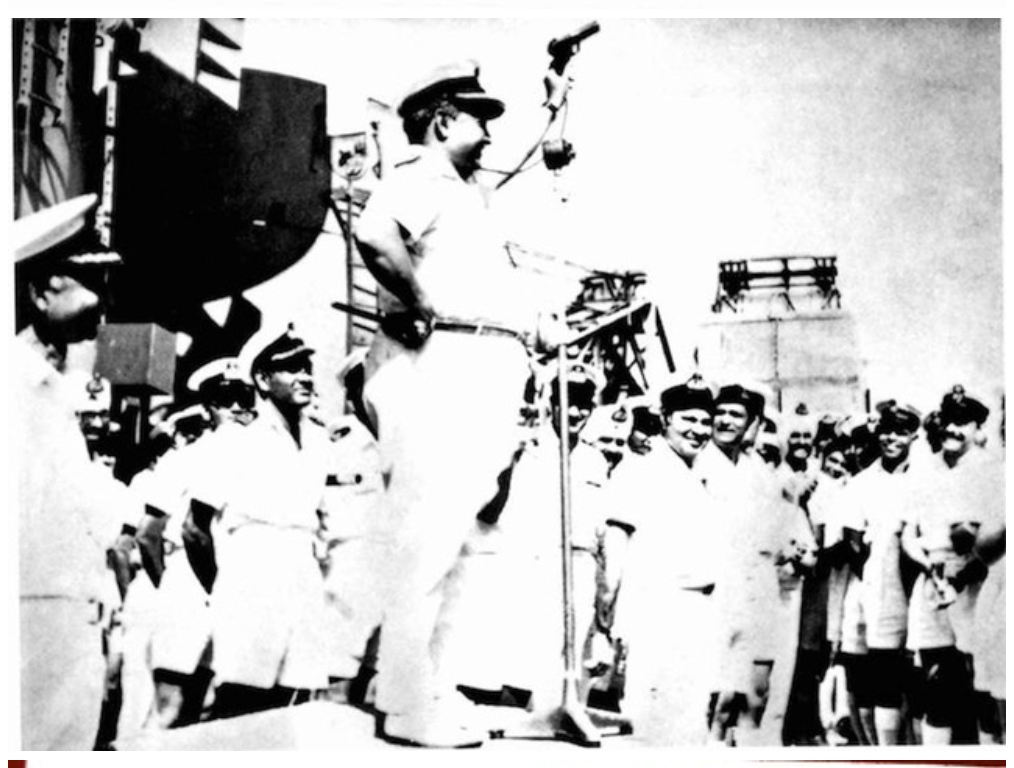
immediately after the 1971 India-Pakistan war.
Photo credits/courtesy: Arjun Krishnan, son of Vice Admiral Nilakanta Krishnan.
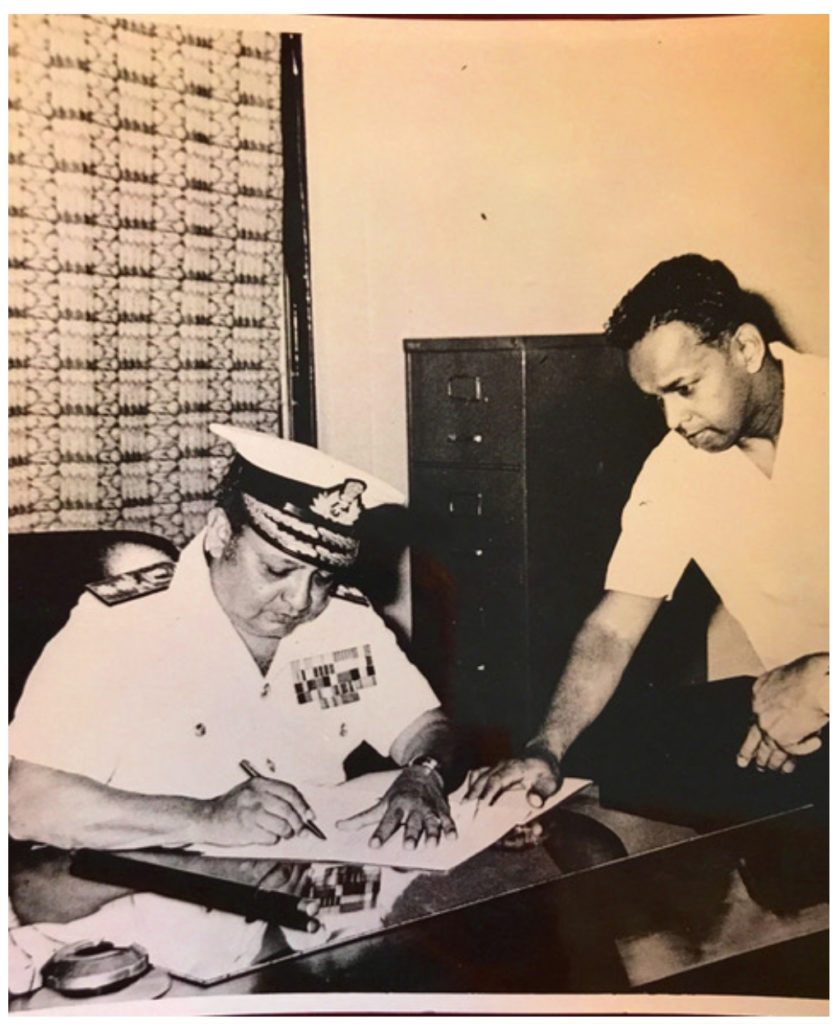
Photo credits/courtesy: Arjun Krishnan, son of Vice Admiral Nilakanta Krishnan.
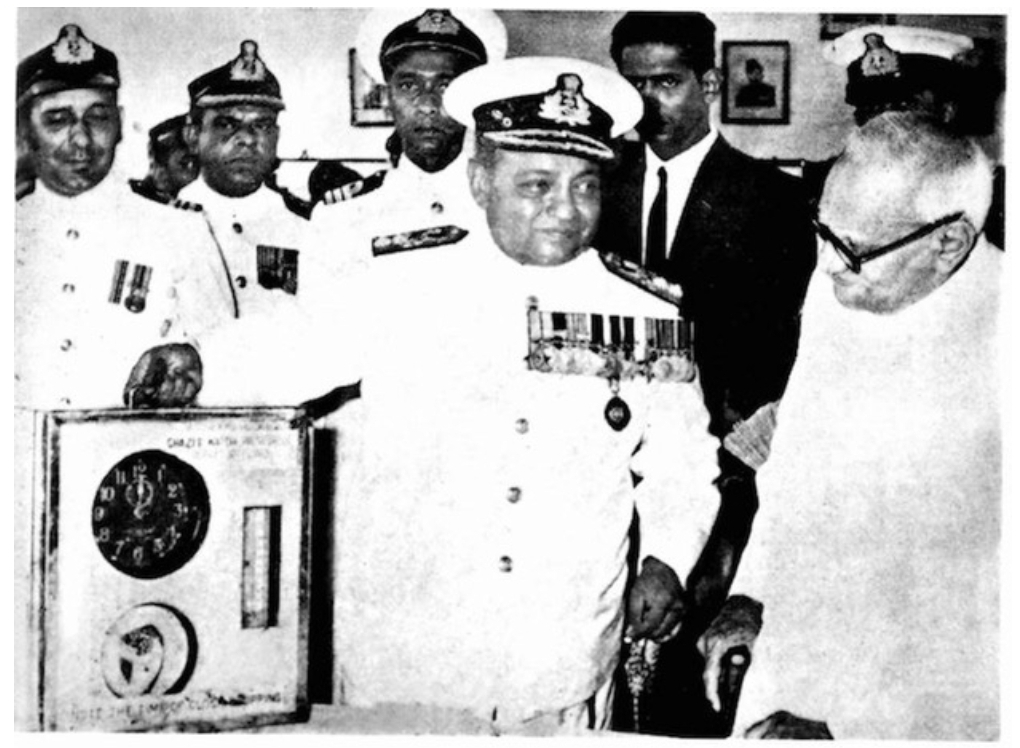
to the then President, V.V. Giri.
Photo credits/courtesy: Arjun Krishnan, son of Vice Admiral Nilakanta Krishnan.
Born on 8 June 1919, Krishnan joined the training ship Dufferin in 1935 and was selected for the Indian Navy in 1938. He trained in the United Kingdom and saw action in World War II in several theatres — Arctic Ocean, North Sea, Norwegian Campaign and Indian Ocean. This experience of war from close quarters, in all its fury and intensity, was to prove invaluable in his growth as India’s combat leader. It was baptism under fire and led to Krishnan being awarded a gallantry medal, the Distinguished Service Cross (DSC), for his bravery in action. He is in a select group of only two Royal Indian Navy (RIN) officers who were awarded the DSC — the other being Daya Shanker who also rose to Flag Rank and served with eminence.
This action is worth recalling because it gives an insight into Krishnan’s daring-do and offensive spirit, which were to characterise his approach in later years. As the Captain of a small tug boat with a crew of just 12 ratings, then Lieutenant Krishnan was involved in the capture of Khorramshahr (Abadan) in the Persian Gulf. His tug not only provided advance warning and information to the following Royal Navy attacking force, but also forced the surrender of an enemy gun boat. This amazing feat was made possible because Krishnan and a small bunch of six sailors boarded the gun boat which had superior armament and more number of people (23) and were able to overcome them in a pitched pistol battle which saw them take twenty prisoners and three enemy personnel killed. Among the dead was the Captain of the gun boat, killed by Krishnan in exchange of fire, in a one to one duel.
Many such inspiring and hair-raising accounts have been described in his autobiography A Sailor’s Story (Punya Publishing, 2011) which was edited and put together by his son Arjun Krishnan, a Chartered Accountant, SAP professional and writer himself. It is worth reading not just for the subject but also because we have so few autobiographies and biographies of our maritime heroes. As Arjun puts it, “It behoves us to remember and celebrate our heroes, the great men and women who fought for our freedom and continue to bring military glory which helps us make a strong and respected nation.”
After a range of experiences encompassing operations, combat, mortal danger and leadership challenges in World War II, Krishnan and his contemporaries, the pioneers of Indian Navy, were to experience the post war challenges of demobilisation and sharp reduction in the strength of the Royal Indian Navy (RIN), the Naval Uprising and Partition and its aftermath. Here again, Krishnan was to see action in the siege of Junagarh, just after independence. He was involved, initially as the Officer in Charge of the Motor Launch 420, that provided escort to two of the Landing Ship Tanks (LSTs); he then landed and established a naval communication centre at Porbandar and, subsequently, he became the Naval Liaison Officer to the Commander of Kathiawar Defence Force (KDF) Brig Gurdial Singh. Consequently, he was part of the huge column of vehicles that entered Junagarh and, interestingly, it was through the Navy communication channels set by Krishnan, that the news of surrender of Junagarh was transmitted to New Delhi. While the action at Junagarh didn’t amount to much more than ‘military posturing’ it taught young Krishnan several important lessons related to jointmanship between forces, political direction, state building and seizing the initiative.
Over the next decade plus, Krishnan went through several tours of duty including as the Plans and Intelligence Directorate at Naval Headquarters Delhi where he was among the team that created the blueprint for the modern Indian Navy, Staff Course in United Kingdom followed by a tenure as the Deputy Naval Adviser in our High Commission in London, command of Minesweeper squadron followed by that of the training frigate INS Tir, Deputy Secretary Military Wing at the Cabinet Secretariat at Delhi and above all, the prestigious assignment of the Commanding officer of our flagship Cruiser INS Delhi where he was to see action again in the liberation of Goa, Daman and Diu.
This story had an interesting twist. Krishnan had actually handed over Command of INS Delhi in Jun 1961 and taken over as Commanding officer, INS Shivaji in Lonavla, while Delhi headed for a refit. As clouds of action loomed over the horizon of the erstwhile Portuguese territories, Krishnan was called back to assume command of INS Delhi and get the ship ready for war in a week. With only one condition of getting his erstwhile crew back, including his ace navigator Lt Cdr JG (Podgy) Nadkarni (who rose to become the Naval Chief in the late eighties), Krishnan revved the ship to full operational status in five days. This involved the herculean task of fuelling, ammunitioning, storing and defect repairs of a ship that was still ‘technically’ in refit.
Delhi was deployed off Diu to provide ‘distant support’ to the Indian Army and warned to be ten miles clear of coast, keeping in mind ‘shore batteries (guns), hostile aircraft, motor torpedo boats and, possible, submarine threat’. Krishnan was not the sort who could be kept out of the fray in this manner. Early on the morning of 11 Dec 1961, after sinking four ships off the harbour, INS Delhi learnt that the Army troops were under very heavy and well directed fire from the Diu fortress and were unable to make progress. Krishnan quickly took the initiative of closing the ship to one mile from shore and undertook heavy bombardment of the fortress with the formidable 6 inch guns of INS Delhi. Within 15 minutes of unleashing the devastating fire that destroyed the lighthouse within the fortress and other fortifications, the white flag of surrender had been hoisted and it was the Delhi’s boat with a young Lieutenant that hoisted our national colours in Diu for the first time. As Krishnan recollects in his autobiography, “I have always believed that if force has to be used there has to be no pusillanimous or half-hearted measures. Preponderant force used to good effect always produces the quickest results.”
Krishnan’s action came in for huge praise from Lt Gen J.N. (Muchu) Choudhuri, the GOCinC Southern Army Command and overall in charge of Operation Vijay — operations for liberation of Goa, Daman and Diu — who wrote to him later: “I would particularly like to thank you for the help you gave in commanding INS Delhi. You really saved the situation”. Op Vijay ended on 16 December but Krishnan, who took home many lessons, was destined for greater glory as combat leader a decade later in 1971.
The 10 years in between saw Krishnan become the second Commanding Officer of INS Vikrant, India’s (and then Asia’s only) aircraft carrier which enabled him to understand Carrier Operations up-close, undergo the prestigious year long course at the Imperial Defence College at London (now called the Royal College of Defence Studies), become the Naval Adviser at our High Commission in London, move on as Chief of Naval Aviation at Naval Headquarters, do a brief two month mission to Ghana as adviser to their Government, take over as the Vice Chief of Naval Staff (VCNS) in August 1967 and move on to Mumbai as the Flag Officer Commanding in Chief (FOCinC) Western Naval Command (WNC) in February 1970 before finally landing in Visakhapatnam as the FOCinC ENC in February 1971. These tenures gave him rich experience in diplomacy, force structuring and acquisition. However, his strategic outlook was always undergirded by a spirit of aggression and going for the jugular. As he recollects in his autobiography, he was guided by the motto “if you want peace you must be prepared for war”. Both as VCNS and FOCinC West he did much in the fields of capacity building, combat readiness, doctrinal transformation and preparation for war.
The stage was thus set, when Krishnan took charge in Visakhapatnam. As the crackdown in the then East Pakistan started, it was clear that another war was imminent and he had no time to lose in preparing the troops for battle. The Eastern Naval Command was, in those days, not as well equipped as the West — ships were fewer, technical and logistics support were still coming up and the Eastern Fleet was yet to be formed. However, with the Bay of Bengal becoming the primary theatre of war, Krishnan with the backing of Admiral S.M. Nanda, the Chief of the Naval Staff, set about getting ready. As he recollects, “All our discussions stemmed from the one overriding thought, a firm conviction bordering on an obsession that should war come… our strategy right from the onset of hostilities should be one of bold offensive.” This translated into the operational concept of “seeking action, taking risks if necessary and destroying the enemy in his ports and at sea”. Targeting his long Sea Lines of Communication (SLOCs) by which the western wing of Pakistan was able to maintain the eastern wing became the natural collateral objective of war.
While Naval Headquarters played its part by assigning the aircraft carrier Vikrant and couple of Frigates to the Eastern Naval Command, the subsequent operational plans were the handiwork of Krishnan and his team. Sustained work up of the Carrier and its integration with the Eastern Fleet which came into being on 1 November 1971, live war-gaming exercises at sea and all round rallying of the Command to enhance preparedness, became Krishnan’s all-consuming obsessions. Thus, when battle stations were sounded in December 1971, the ENC was able to throw everything into the battle and land lethal punches.
Krishnan’s mastery and overall choreographing of the war ensured that the Indian Navy had sunk the Pakistan submarine Ghazi at the entrance of Visakhapatnam following a sound deception plan that lured her to doom. This enabled untrammelled fleet operations, with Vikrant as the lynchpin of maritime operations exercising sea control, resulting in heavy bombardment of east Pakistan cities and ports of Chittagong, Cox’s Bazaar, Khulna, Chalna, Mongla, destruction of their airfields, power house, wireless stations, fuel tanks, port and other infrastructure, interdiction of their Navy and merchant marine ships including smaller gun boats and tugs, control of contraband and virtual throttling of the then East Pakistan from sea. This, in turn, led to the eventual dénouement of surrender and more than 90,000 prisoners of war as there was no escape from the sea for them.
Krishnan’s adroit use of the INS Vikrant was commented upon favourably by many commentators, including the naval historian Vice Admiral G.M. Hiranandani in his book, Transition to Triumph, published years later. This was particularly significant as there were several misgivings about using the Carrier before the war and her being a lucrative target for the enemy submarine. While acknowledging these “fears” Krishnan brings out that Nanda and he were on the same page that “Vikrant was central to achieving the Navy’s objectives… that she must be fully committed to war… and that it would be a calculated risk worth talking to put our only aircraft carrier to fullest use in war”. Krishnan’s own earlier experience as the Carrier Captain and Chief of Naval Aviation (the appointment is now called ACNS Air) came in good stead in this regard. In his book Navy at War (Lancer Publications, 1987), Navy historian Cmde Ranjit Rai says, “Krishnan’s deployment of Vikrant speaks volumes of his tactical foresight.”
It is no surprise then that the surrender ceremony at Dacca, which has since been immortalised in the famous photograph capturing the moment, saw Krishnan as the Indian Navy’s representative. As Rear Admiral Mohammed Sharif, the Flag Officer Commanding Pakistan Navy in East Pakistan mentioned to Krishnan while handing over his pistol and ammunition clip to the latter as part of the surrender, “Your Navy fought magnificently and had us cornered everywhere.” Soon after this, Krishnan embarked Vikrant, off Paradip, to acknowledge its magnificent performance and displayed the pistol to rapturous cheers.
Thus, Krishnan not only was a part of Indian Navy’s finest moment but also contributed significantly to making it possible. He always exhibited the philosophy of “attack, attack, attack” as he exhorted the Eastern Fleet to do in war and was a person who displayed great resolve, strategic acumen and offensive spirit, all qualities that had been burnished by his own experiences of war and combat. Admiral Nanda in his autobiography The Man who Bombed Karachi describes Krishnan as a “good strategist who made his plans well… both of us got along well and were keen that the Navy go on offensive”. The late Vice Admiral M.P. Awati who was involved in the war in the eastern theatre as the commanding officer of INS Kamorta once told this author that “Krishnan was amongst the most sharp and brainy people he had encountered”. He can, thus, rightly be described as one of Indian Navy’s great combat leaders.
Having reached the pinnacle of his career in the Navy, Krishnan was deputed by the Government of India to be the first Chairman and Managing Director of the Cochin Shipyard Limited (CSL) in 1973 and continued there till 1979. His leadership in building that greenfield yard needs a separate essay in itself but fittingly it is this very shipyard that is building India’s first indigenous aircraft carrier to be named Vikrant and commissioned a couple of years from now. Krishnan would regard it as a matter of great providence that the ship he commanded and, later, masterfully deployed, would be reborn in a new, more powerful, and indigenous avatar. For one of India’s greatest maritime heroes there could be no better gift.
Today, on his birthday, let us salute this maritime icon. Krishnan passed away in January 1982 but leaves behind a legacy that is cherished by all in the Indian Navy. As his navigator, Admiral J.G. Nadkarni, said in a commemorative article in the silver jubilee (2012) issue of the naval journal Quarterdeck, “Admiral Krishnan was one of the great officers of the Indian Navy. We shall not see his like again.”
Cmde Srikant Kesnur is a serving Navy officer with interest in contemporary naval history

